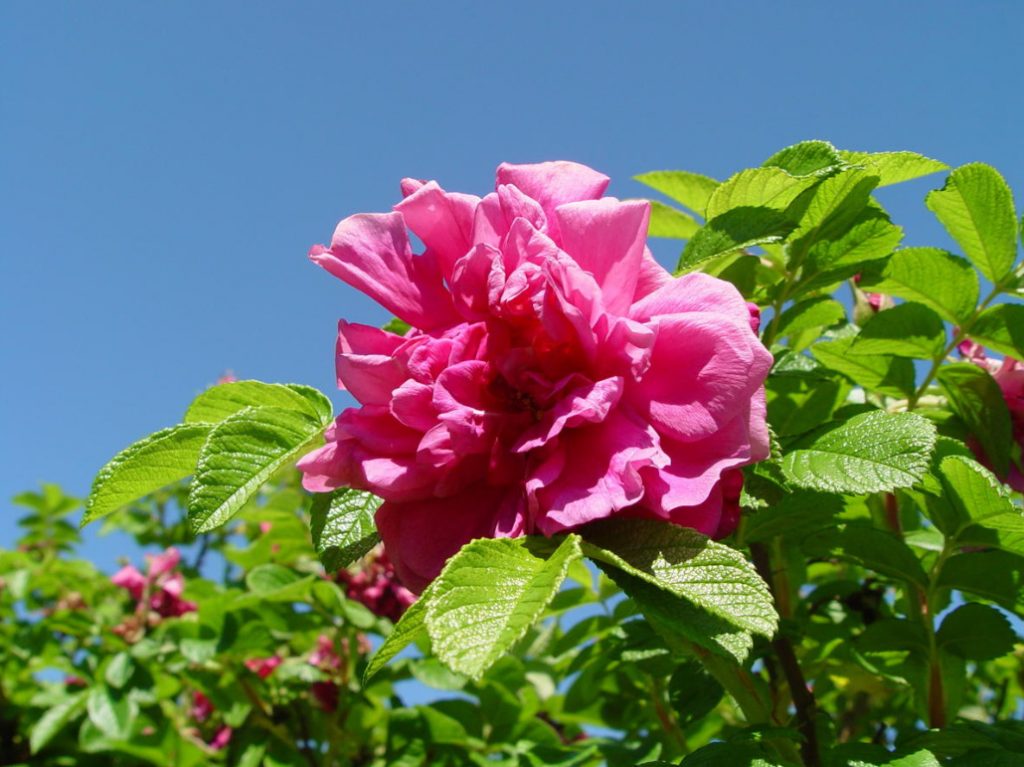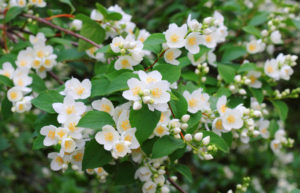Common types of Rosehips
What species are most interesting for cultivation and use? Here are descriptions of some of the most common.
Rosa pimpinellifolia
Rosa pimpinellifolia is a shrub up to 2 m tall. the Spines are long, horizontal. The bark is smooth, shiny, red-brown, on perennial branches rough, gray. The leaves are narrow, lanceolate. Stipules with glands. Petals pale or bright pink, oval. Fruit velvety-tomentose, ovoid. Blooms in spring and summer.

Rosa davurica
Rosa davurica is a shrub with a height of 1-2 m. the Spikes are curved, protruding, two at the base of the branches. Leaves are compound pinnate, with oblong leaflets, bottom lined with small yellow glands. Flowers solitary; petals dark pink, entire. Fruits are red, spherical. Blooms in June-July.
Rosa acicularis
Rosa acicularis is a shrub up to 2 m tall, with arched shoots covered with thin straight spines. Leaves pinnate, ovate leaflets, glabrous above, thin-haired below. Stipules are glandular-ciliate. Flowers solitary. Sepals lanceolate. Petals obovate, pink or reddish. The fruits are red, ovate or elliptical, strongly narrowed at the base. Blooms in June-July.

Rosa majalis
Rosa majalis is a shrub up to 2 m tall. the Spikes are small, curved, located at the base of the leaves. The leaves are pinnate, the leaves thin, narrowed at the base, appressed-pilose, the network of veins stands. Flowers solitary. The petals are pale or dark red. Fruits are small, smooth, orange or red, fleshy. Blooms in may-July.
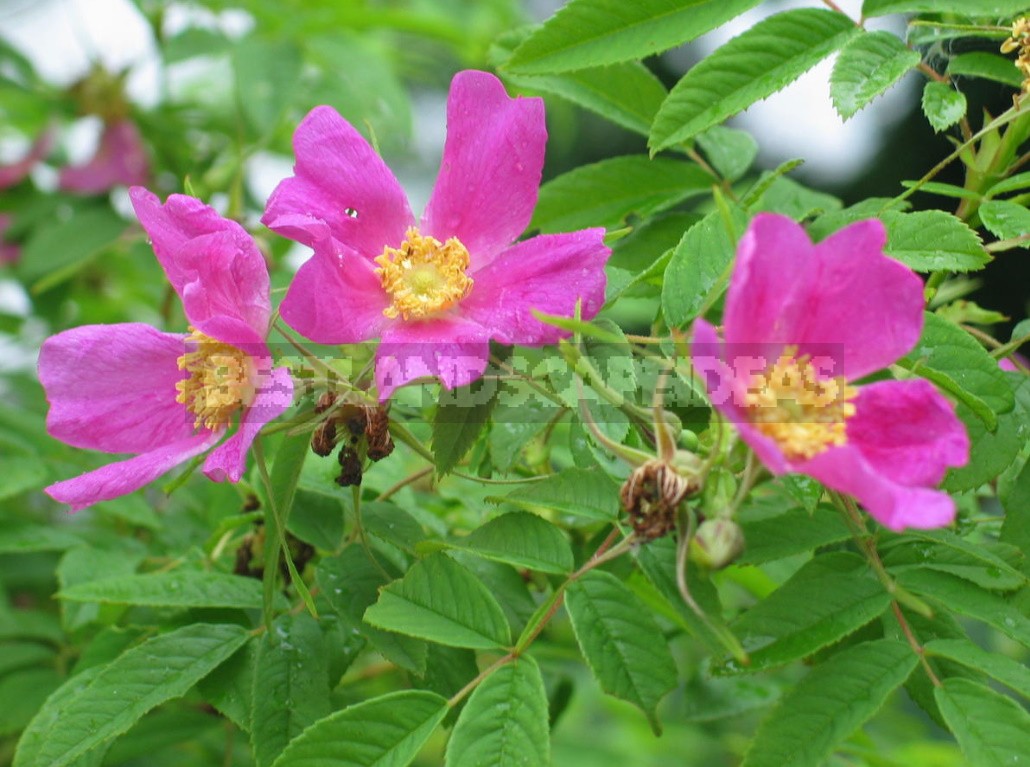
Rosa rugosa
Rosa rugosa-shrub height of 1-2 m, branches with straight thin, different in length spikes, with an admixture of needle-shaped spikes, flowers with dark crimson petals. Leaves with strongly wrinkled leaflets. Fruits are large, spherical, bright red.
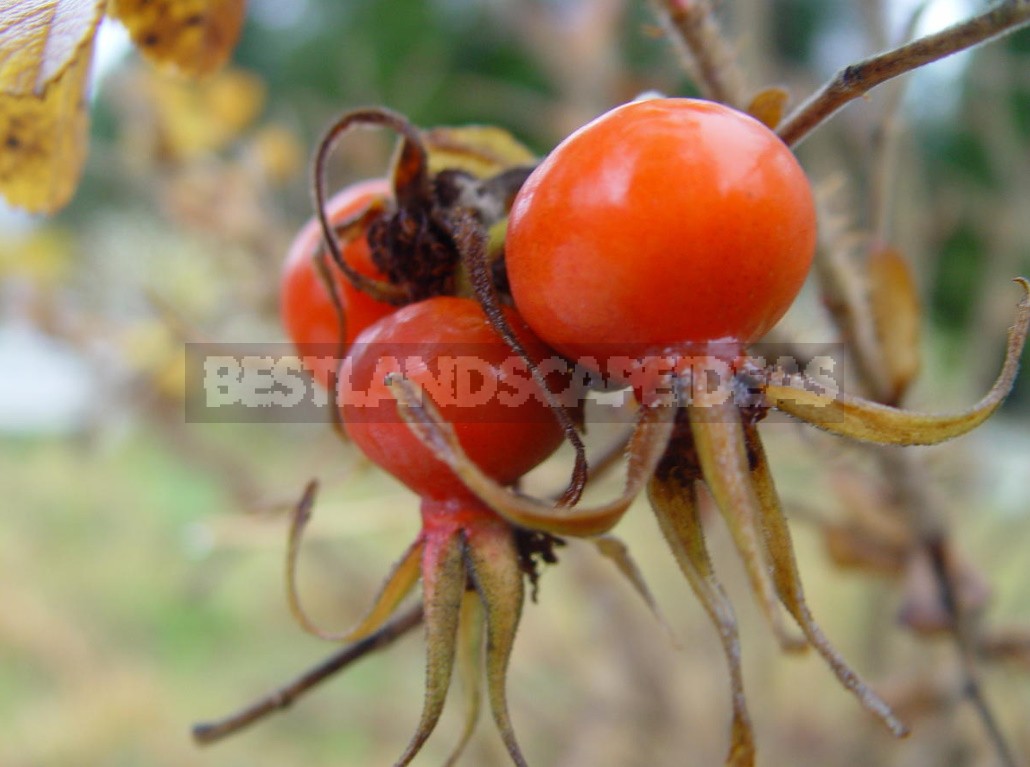
Rosa caesia
Rosa caesia is a shrub with a height of 1.5-2 m. Branches with a glaucous namete; thorns are strong, with an expanded base, curved; leaves of medium size, close together, glabrous above, pubescent below. Flowers in corymbs; sepals greyish; petals bright pink, fruits orange-red. Blooms in June-July.
Rosa canina
Rosa canina is a shrub 1-2. 5 m tall with rare strong curved, expanded spikes at the base. The flowers are numerous, on long pedicels. Sepals pinnate, recurved after flowering and fall down before ripening of the fruit. Fruits are oval, red.
Rosa amblyotis
Rosa amblyotis is a shrub up to 1.5-2 m. Spikes are awl-shaped, straight; stipules are thin, membranous, obtuse, pubescent from below. Bracts expanded. Flowers solitary; petals dark pink, large; fruits spherical, red. Blooms in June-July.
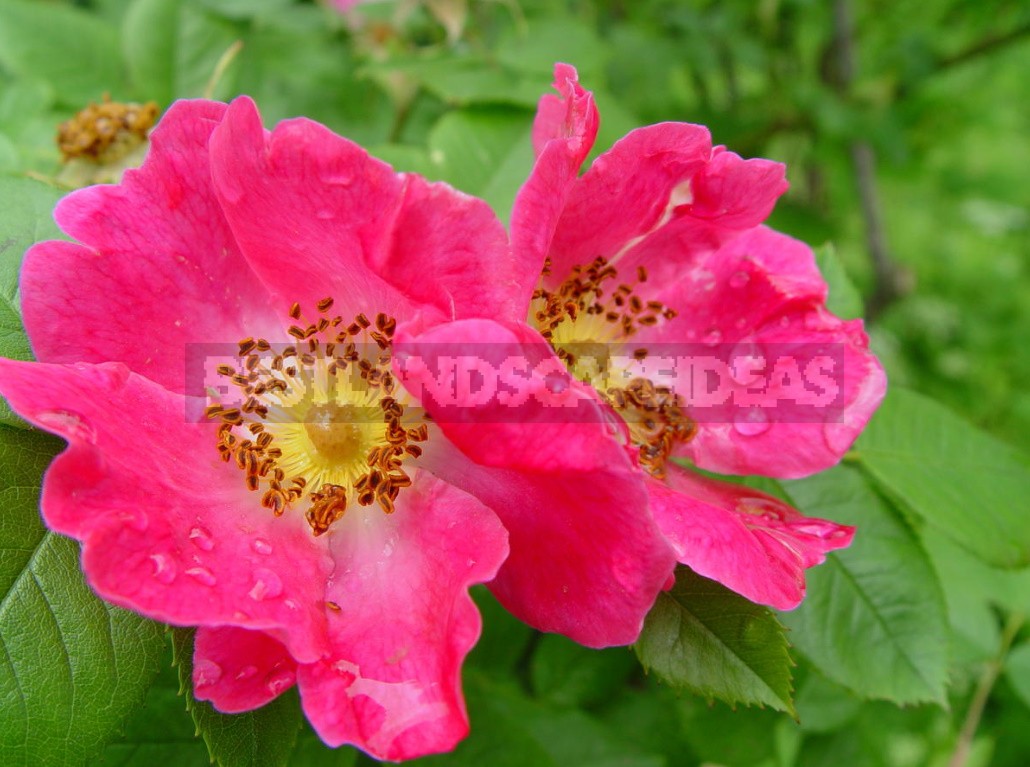
Rosa gallica
Rosa gallica is a shrub up to 1 m tall with an underground stem, from which erect or spreading flowering branches depart; thorns are small; leaves with large leaflets. Flowers solitary, pedicels long, thin; Corolla large; petals longer than calyx, notched, dark red; fruit globose or ovate. Blooms in June-July.
Cultivation and reproduction of wild rose
Rose hips are easy to propagate by cuttings. Cuttings in the spring in sand, a mixture of sand and peat (1:1) or a mixture of sand, peat, leaf humus (2:1:1). Well propagated root growth, which is separated from the parent plant before flowering.
Can be propagated and seeds. For sowing, the largest and most Mature fruits are selected, seeds are selected and immediately sown in a mixture with sand, placed in prepared ridges. For 3-4 years, plants grown from seeds bloom.
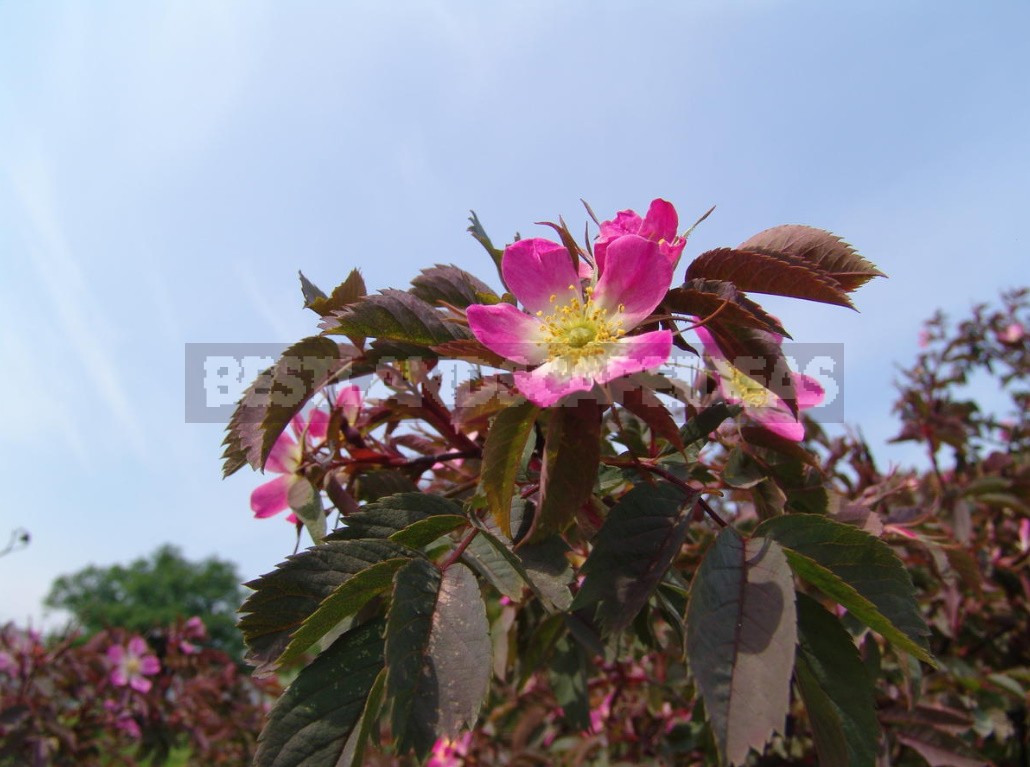
The best exposure for wild roses is the southern, Sunny side. But they can grow in light (sliding) penumbra. In the shadow areas of plants bloom weakly. Planting pits (50 x 50 or 70 x 70) for rose hips should be filled with humus mixed with dolomite flour.
Plants are responsive to spring regular fertilizing with mineral fertilizers with trace elements. But the main advantage of rose hips is their ability to put up with acidic soils, and close groundwater, and poor soils, and the lack of regular agricultural practices.
